Creating the perfect homemade pizza often feels like an art form, with every step from kneading the dough to the final toppings playing a crucial role. But there’s nothing worse than taking care in the prep of the pizza, only to have it stick when launching. Luckily, with a couple of pro techniques that I wish I knew earlier in my pizza making career, you can ensure your pizza slides off the peel and into the oven with ease, every time. Here’s how to tackle this challenge using semolina flour, slotted peels, and a bit of shimmying.
Use Semolina Flour
One of the most simple and effective methods to prevent sticking is to use semolina flour as your base on the peel. Semolina flour is a coarse, purified wheat middling of durum wheat used primarily in making pasta, bread, and in this context, as a non-stick agent for pizza peeling. Durum wheat is known for being the hardest of all wheat varieties, which contributes to semolina’s distinctive coarse texture.
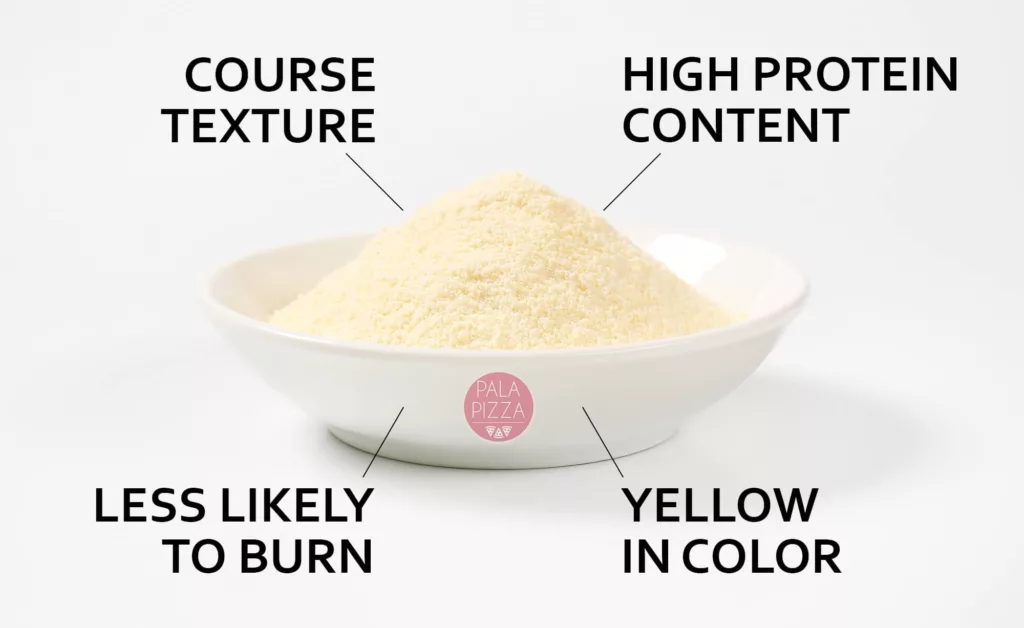
Why Semolina Flour Works
Since semolina flour is coarser than traditional all-purpose or pizza flours, it creates a small layer between your dough and the peel that significantly reduces the risk of sticking. Its granular texture acts almost like little ball bearings, allowing the pizza to slide off the peel effortlessly.
But if the non-stick properties weren’t good enough, semolina is also much less likely to burn. Too much regular flour will instantly burn in a 900 degree oven, resulting in a very bitter taste. But semolina holds up well to the heat.
Use Slotted Metal Peels
Slotted pizza peels are another innovative solution to the sticking problem. These peels have a series of holes or slots across their surface, which serve a dual purpose. Firstly, they allow any excess flour (including semolina) used to prevent sticking to fall away as you transfer the pizza to the oven. This means less burnt flour taste on your pizza base. Secondly, the reduced surface area of the peel contacting the dough minimizes sticking points, further easing the transfer process.
As most of you know, I’ve tested a lot of pizza ovens. So I usually try to order the matching peel that goes with the oven, which means I’ve also used a lot of peels. Gozney makes the best peels, hands down.
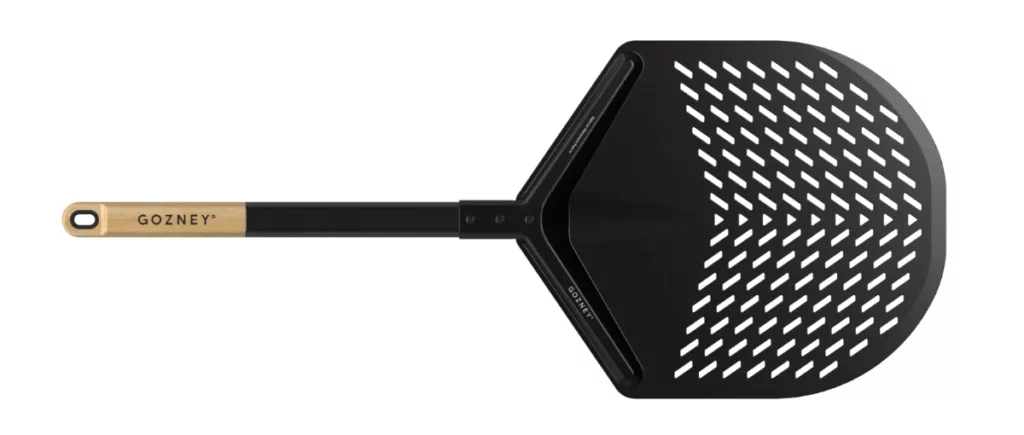
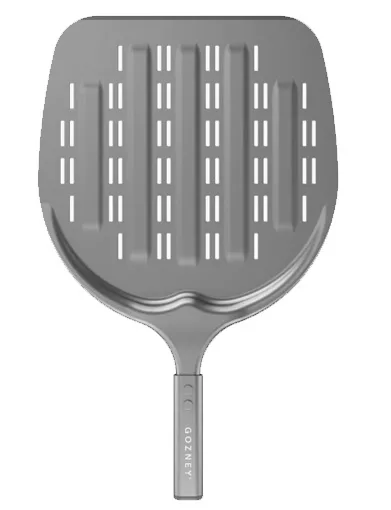
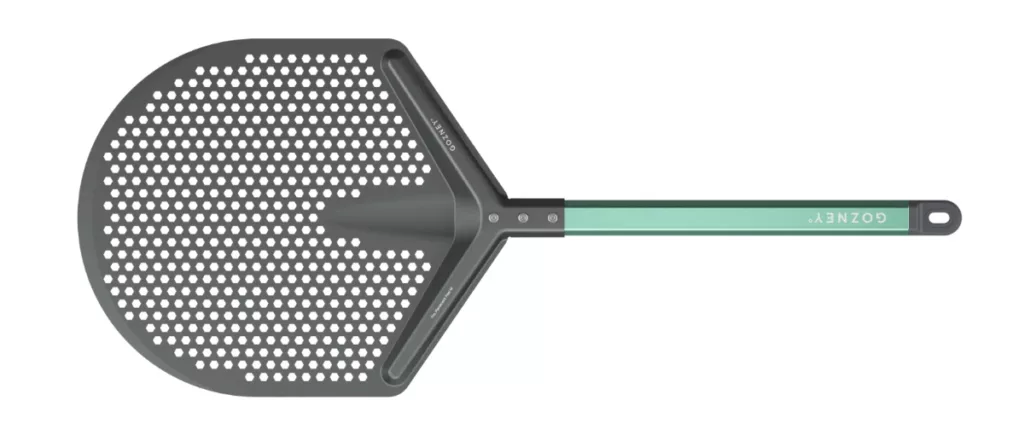
What about wooden peels?
If you’re an absolute beginner, a wooden peel can be a quick hack to help prevent sticking. However, I strongly recommend everyone learning the best method for making pizza, rather than skipping corners. Professionals typically use metal peels; they’re cleaner, more durable, and thinner which aids in retrieving the pizzas.
If you’re used to using wooden peels and just picked up a metal peel, expect a bit of a learning curve. Dough definitely sticks to metal more, but there are some pro tips that will make it easy.
Don’t Build Pizza on Peel
Again, this one will take practice. But one of the best tips I wish I knew sooner is to build your pizza on the counter or a butcher block (with some semolina down first). Once the pizza is prepared, gently lift a corner of the dough and in one complete motion, slide the peel under the pizza to pick it up.
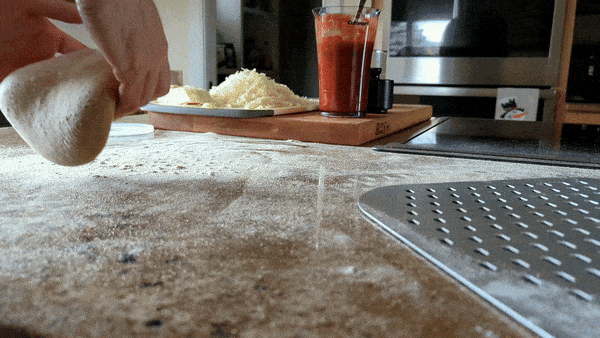
This will take the most practice out of any technique mentioned in this article, but offers huge advantages. You can always practice it with some extra dough or without any toppings.
Why does this work? If you build the pizza directly on the peel, the wet dough can absorb the flour and settle into place. The dough may have movement shortly after you set it on the peel, but by the time you add the weight of the toppings, it’s likely to stick.
Shimmy Often
Frequently moving the dough on the peel will prevent it from sticking in place. I like to give the pizza a quick shimmy on the peel while walking outside to my pizza oven. If it’s moving freely at this point, you’re guaranteed to be good to go.
If it still seems stuck at this point, set it back down and lift a corner of the pizza where it seems stuck. Gently toss a bit of semolina under it. You can also lift a corner of the pizza and blow air from your mouth to loosen it (only if it’s your own pizza!).
Combining Techniques
For the best results, combine both of the techniques mentioned above. Use semolina flour on a slotted peel for a nearly foolproof method to get your pizza into the oven without mishap. This combination not only minimizes sticking but also contributes to a better-tasting, professionally cooked pizza right in your own backyard.
Step-by-Step Guide:
- Spread out some semolina flour on the counter.
- Open your dough box / proofing container and gently dust a light amount of semolina onto the doughball to prevent sticking while picking it up.
- Place doughball into semolina on the counter.
- Stretch dough. Push excess semolina off to the side of your working area.
- Prepare your pizza with toppings.
- Add a very light dusting of semolina to your peel.
- Lift a corner of your pizza dough and in one complete motion slide the peel under the pizza.
- Readjust the pizza on the peel to make it round or fix any toppings.
- Shimmy the pizza on the peel.
- Launch.
Final Tips
- Act Quickly: Once your pizza is prepared on the peel, get it into the oven as soon as possible. The longer it sits, the more likely it is to stick. Remember: always shimmy!
- Practice Your Technique: The way you slide the pizza off the peel and into the oven makes a big difference. Practice a quick, confident flick to get the best results.

